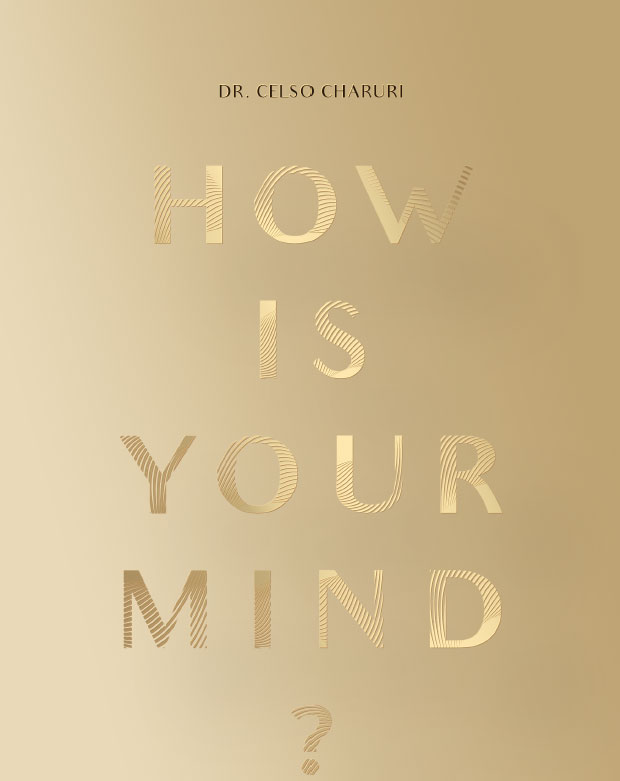Akhenaten and monotheism
Akhenaten and monotheism
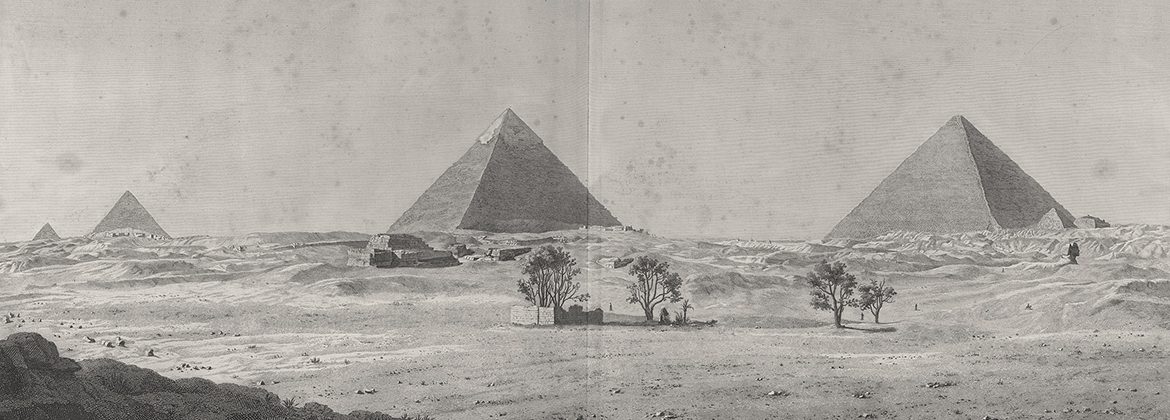
Anyone who visits Egypt, or even reads about Ancient Egypt, can’t remain indifferent to the level of knowledge bequeathed to humanity by this 5,000-year-old civilization. However, everything we know about the Egyptians is carved in stone, papyrus, and tombs, written in a unique language (hieroglyphics) deciphered in 1822 by Champollion. And, from time to time, new discoveries emerge from the desert sands through a process that requires imagination and judgment.
Historians divide the times of Egyptian rulers into dynasties, with a total of thirty dynasties spanning three thousand years.
During the 18th dynasty, around 1580 to 1320 B.C.E., Pharaoh Amenhotep III, married to queen Tiye, ruled for 13 years. What we know about this pharaoh and his queen is that they were refined and endowed with a great sense of State, at a time when Egypt opened up to the world and there was considerable development of cultural and spiritual aspects. Amenhotep III and queen Tiye’s son was named Amenhotep IV and, as we are about to see, was later changed to Akhenaten (Effective Spirit of Aten).
There are few records of Akhenaten’s childhood, but it is known that he married Nefertiti (“the beautiful one has come”) when he was 12 years old, and they had six daughters.
His upbringing was greatly influenced, in addition to the permanent presence of his parents, by Amenhotep, son of Hapu, a most respected architect and public official, regarded as a great sage for reaching the mythical age of 110.
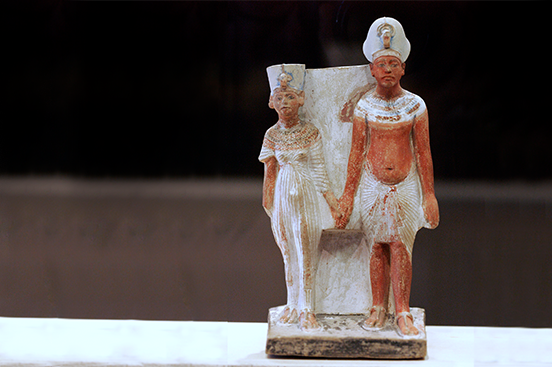
Akhenaten most likely drank from Amenhotep’s spiritual wisdom that embodied the ideal of ancient Egypt. As a man of action, he understood that thoughts would be worthless if they were not set in stone.
Many historians often dwell on Akhenaten’s physical appearance based on the representations of the pharaoh created by court artists, given that his mummy hasn’t been found. The pharaoh’s body is described as androgynous, emphasizing his somewhat oval head, slanted eyes, and rounded and inclined skull. These forms are less visible on Nefertiti, but the elongated head is clearly seen in the depiction of her daughters and even some court members.
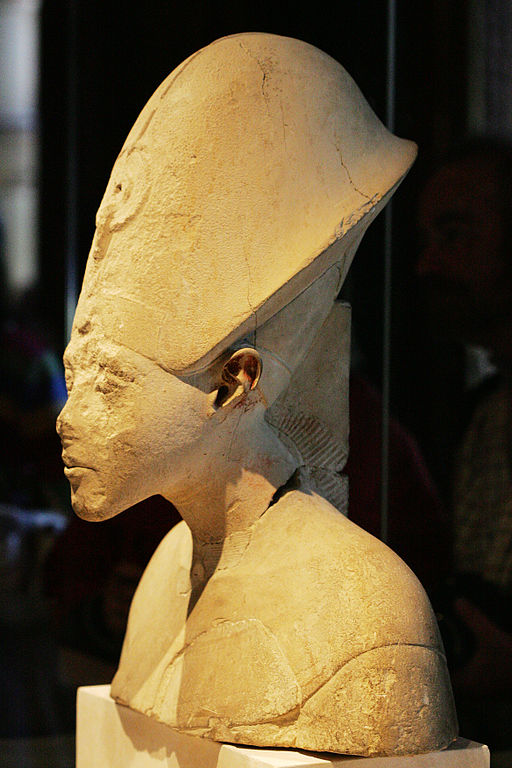
Records in stone and on walls, statues, and correspondence sent by other nations, show, with some degree of certainty, that there was a co-regency between Amenhotep III and Amenhotep IV. This practice, common in Pharaonic Egypt, symbolizes the unity of thought between father and son in an order aimed at the continuity of policies and ideals.
Based on records found in the city that Akhenaten would later build, his father is believed to have died around the twelfth year of his son’s reign.
Above all, the name change from Amenhotep IV to Akhenaten (probably around the sixth year of his reign) represented a change in the nature of things and a sign that a new way of acting was about to begin.
Egyptologists who examine the so-called Amarnian period (from the city of Tell el-Amarna) do not usually agree in their analysis. Some consider Akhenaten mentally unstable, while others see him as a remarkable and unusual pharaoh. Some critics of Akhenaten’s regency might have been influenced by the abrupt end of his reign, preventing them from clearly seeing the importance of this hiatus, this rupture, for the history of Egyptian civilization and, perhaps, of all humanity.
Today, most scholars admit that Akhenaten introduced new religious practices and took action by building a city, in addition to laying the foundations of unprecedented social relationships. The artistic representations were also innovative. Images of the pharaohs in combat or during the hunt were no longer frequent and attested to spiritual development. The pharaoh could be seen in several family scenes with his wife and daughters in an atmosphere of affection, in addition to others that praised nature and the solar religion, which everyone attended indiscriminately.
Some historians consider Akhenaten as the introducer or re-introducer of monotheism in Egypt. This issue is greatly influenced by the myriad of Egyptian gods. However, we must remember that there was always a Supreme and Absolute God above all relative gods in this civilization. This one God is very present in Egyptian cosmogony and cosmology. Thus, we could consider that Egypt has always been monotheistic. To better understand this issue, we can establish a parallel with the Catholic religion, monotheistic in essence but full of sanctified entities that acquire some specialization in the popular imagination, such as protector of animals, wedding facilitator, responsible for the weather, etc.
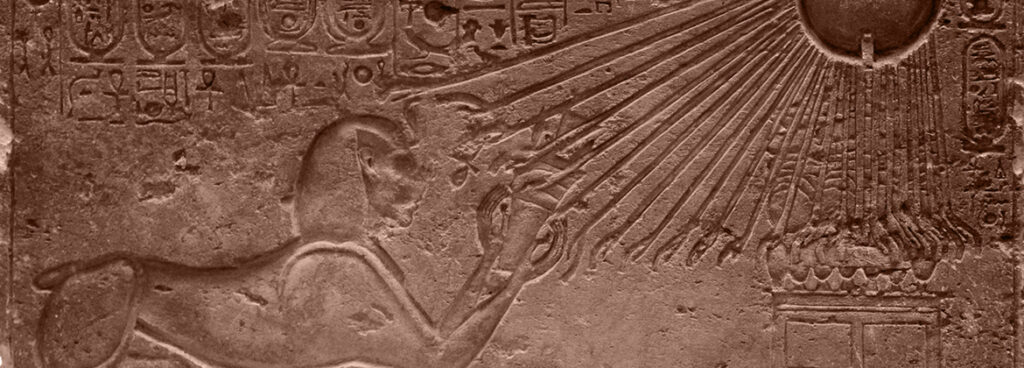
In order to understand the real importance of Akhenaten’s reign and why it is considered one of the most important events in Egyptian history, we must go back to the origins of the religion of that nation. Heliopolis, the “City of the Sun”, located on what is now the outskirts of the city of Cairo, was the ancient theological center of Egypt. Aten (or Atum, “the Complete”) was the creator God, and Ra (or Re) the center of the solar cult. When the pharaoh died, he flew to the sky and joined the solar disk, shining forever. When Akhenaten took the throne, Thebes was Egypt’s main religious, economic, and political center and where the god Amun was worshipped. There were excessive powers given to the priests of Thebes, who were too absorbed by material gains at the expense of spiritual aspects. Akhenaten took a stand not against Amun but against his followers, a veritable group of priests who turned religious beliefs into commercial operations.
Some writers compare Akhenaten’s actions to Christ’s expelling of the merchants from the temple. Akhenaten brought back the ancient teachings of Heliopolis from the times of the construction of the pyramids, a time of purity and the belief that the Sun of Justice and Love would never go down. He was the king and the chief priest, ritually enthroned and charged with maintaining the heritage of his ancestors by holding spiritual and temporal power. He wanted to transform his subjects into disciples and give religion a universal character, eliminating the relative, particular, and inaccessible aspects to the lowest levels of society.
Implementing all these ideas required a new city to be built. Thus, the city of the sun, Akhetaten (The Radiant Horizon of Aten), was built. Amarna was not just an architectural monument but the materialization of new religious concepts and new social relationships among its inhabitants, adorned by representational art of the pharaoh’s understanding of man and the universe.

The final years of Akhenaten’s reign are confusing and unclear, generating many conflicting interpretations. We know that, once again, there was a co-regency between Akhenaten and Semenkhkare, who was probably married to one of his daughters. This union of powers could have lasted about three years, considering Semenkhkare died very young.
Records show that it took 13 years to build Amarna and that Akhenaten ruled for over 17 years, although nothing is known about his death. He was succeeded by Tutankhaten, later named Tutankhamun, who would be his son-in-law or even son. He seems to have returned power to Thebes and Amun in his brief reign.
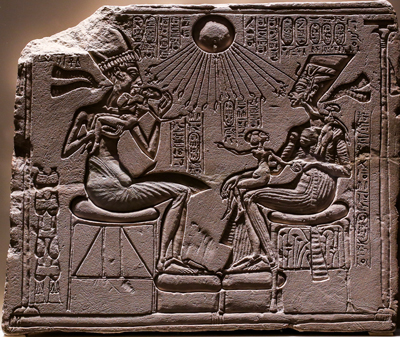
Akhenaten’s mummified body, as we said, was never found; Amarna was abruptly abandoned and destroyed in the reigns of Seti I and Ramesses II. Akhenaten’s name was erased from some monuments and reused in others in a clear attempt to consider his reign as if it had never existed.
The available facts seem to indicate that the Egyptian population, given its characteristics, represented by specific rites and symbols (each town had its “local god”), was not prepared for such a radical reform, universalizing the religion and making clear the existence of a single God. People would have been confused, requiring an effort to adapt their consciences, especially when they allowed the opening of temples and the approximation of the people with the divinity, which was until then the privilege of the priests.
Akhenaten’s diplomatic negotiations with the warlike Hittites, in order to avoid war, were also understood by some as signs of the pharaoh’s weakness. The most crucial factor was the political issue that was never accepted by the priests of Thebes, who saw their power severely diminished.
An undeniable fact is that Akhenaten left a mark, a testimony of courage, determination, and the foreshadowing example of a religion that would come to resemble that of the first Christians.
There is a certain unity between Akhenaten’s thoughts and Jesus Christ’s teachings. Both state that the secrets of life and divinity are present in nature, it is enough to observe them, understand them and then follow what is in the heart and conscience of each being. Excerpts of the Hymn to Aten found in the tomb of Ay, who succeeded Tutankhamun, and most likely written by Akhenaten himself, are similar to some Christian texts, especially Psalm 104, which is almost a quotation of the exaltation verses to Aten.
Furthermore, there seems to be no doubt that the monotheistic Biblical Moses (who lived from around 1220 to 1290 B.C.E., but there is controversy) equipped himself with Egyptian wisdom at a time when the Ramesside pharaohs were hostile to Akhenaten’s ideals. This fact may have influenced the Exodus, given the uncertainty that the Hebrews were enslaved in Egypt.
Jewish tradition says, “When the sun of a righteous person is extinguished, the sun of another righteous person soon shines”. So it was, and so it will be, forever.
Research source: nationalgeographic.pt






